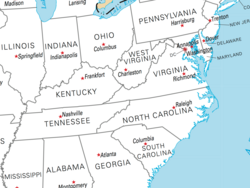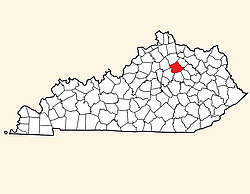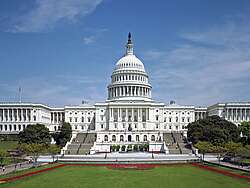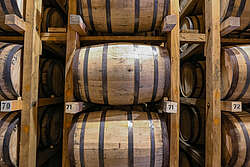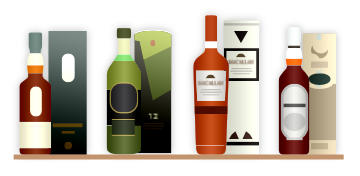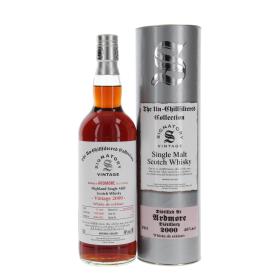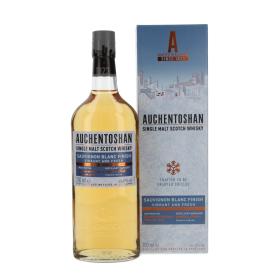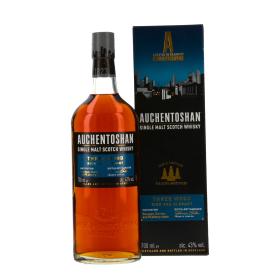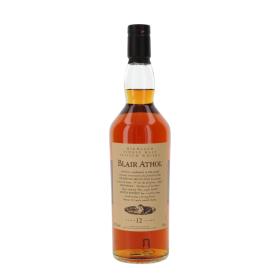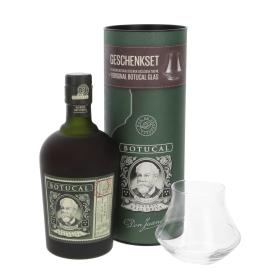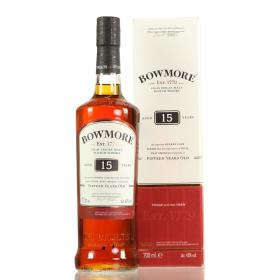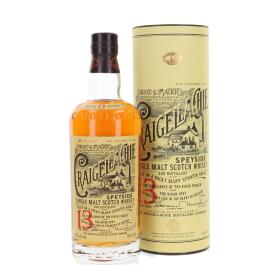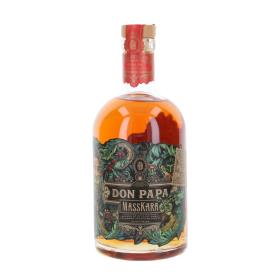Bourbon, an American whiskey, has a rich history dating back to the arrival of European settlers in the 15th and 16th centuries. Initially, rum dominated the spirits market in North America, but the demand for whiskey grew and led to the Whiskey Rebellion in 1794. The name "Bourbon" originated from a French gesture of gratitude during the American Revolution. Prohibition from 1919 to 1933 severely impacted the whiskey industry, but it recovered and became a popular drink with a diverse selection. Today, bourbon continues to be a popular choice among whiskey enthusiasts.
The first settlers (15th and 16th centuries)
The Native Americans knew neither fermented plant juices nor distilled spirits. The only alcoholic foods were probably fermented fruits. The distillation of alcoholic liquids only came to the New World with the immigrants from Europe.
After the English settlers, it was mainly the Scots and Irish who did not want to do without the whisk(e)y they were used to at home in their new homeland. As the American continent was first colonised in Central America and the Caribbean, rum was initially the predominant spirit in North America. Famous families such as the Roosevelts (who produced two US presidents) based their wealth on the distillation of imported molasses (Caribbean rum) at the beginning of the 17th century.
The dominance of rum came to an end when the number of northern European immigrants in North America increased and they did not want to give up their favourite foods and drinks. The colonisation of North America took place from the east coast with its large immigrant cities of Boston, New York (formerly New Amsterdam) and Philadelphia. As grain (rye, wheat) grew well on the land, there was soon a surplus of grain, which the farmers 'preserved' and made easier to transport by distilling it. By refining the grain in this way, the farmers were able to earn a nice supplement to their otherwise meagre existence. The first farm distilleries were established in the states of Maryland, Pennsylvania and Virginia.
But before this could happen, the farmers had to work hard to grow or find the right ingredients for whisky production. The barley required for fermentation grew very sparingly on the land and did not produce good yields. Corn, which had already been bred by the Indians to produce good yields, promised better results. It was soon discovered that maize could be mixed very well with barley, rye and wheat. Peat to heat the dry fires for the barley malt was not found. However, there were enough forests to cover the heating requirements. Unfortunately, the smoky flavour in the whisky had to be dispensed with. The reduced flavour of the whisky due to the lack of peat was compensated for by adding hops, using rye and charring the barrels. And in the unspoilt expanses of the new continent, they found plenty of clean, iron-free water that was low in minerals.
The transition from farm distilleries to pure whisky distilleries took place towards the end of the 18th century. By 1850, there were over 3,000 registered stills in Pennsylvania alone.
The War of Independence (19 April 1775 - 3 September 1783)
After the end of the War of Independence against England, the young America needed additional state income to pay its debts. So George Washington, the first President of the United States of America, levied the first taxes on alcoholic distillates in 1791. George Washington was well aware of the potential of this tax, as he ran a distillery himself.
These taxes were not a major problem for the large distilleries in the East. The taxes were based on the capacity of the stills, not the quantity produced. The six cents per gallon that distilleries with large stills had to pay was therefore a trifle compared to the nine cents per gallon for farmers with small stills. The large distilleries in the East did not have high transport and production costs and were able to increase their production.
The situation was different for the small farm distilleries: distillation was not just a nice sideline for the farmers: Due to their geographical location, cut off from the east by the Allegheny Mountains, they had great difficulty getting their grain to market. It was a much more economical solution to distil the grain and sell it as whiskey. The farmers in the western part of Pennsylvania thought the new tax system was unfair and refused to pay.
The Whiskey Rebellion 1794
The first meeting of the farmers at Redstone Fort in July 1791 marked the beginning of organised resistance. The farmers not only refused to pay taxes, they began to humiliate the tax collectors; tarring and feathering was a favourite method. The resistance and unrest continued over the next few years. No attempts at appeasement by Washington and his government calmed the situation. In July 1794, open violence broke out when about 400 rebels gathered near Pittsburgh and set fire to the house of the regional tax supervisor. George Washington's response was to call out the vigilantes of Pennsylvania, Maryland, New Jersey and Virginia. 13,000 men under the command of General Lee, the governor of Virginia, headed west along with Hamilton and Washington himself.
When the troop reached Pittsburgh in November 1794, it was all over: the rebels had disbanded. About 150 men were arrested and interrogated, but only 2 men were found guilty of treason. Even they were later pardoned by Washington.
The consistent and impressive demonstration of federal power by sending troops almost as numerous as the army in the War of Independence had had its effect. Nipped in the bud - the Whiskey Rebellion was over.
Incidentally, the whiskey tax was repealed by President Thomas Jefferson in 1802.
The origins of bourbon
American whiskey was given the name Bourbon indirectly through the help of the French in the young nation's war of liberation against the English crown. After the victory over the English troops, a county in the border region between present-day Indiana and Kentucky was named in honour of the French royal house of Bourbon (Bourbons - French royal family 1579-1792) out of gratitude. Initially, the region of origin of the whiskey was labelled with the word Bourbon on the barrels. The addition of the name Bourbon became increasingly common for whiskey from the entire region, as whiskey from Bourbon County soon became famous for its high quality. Bourbon County was divided and moved several times over the following centuries. However, even today there is still a county east of Lexington that bears the name Bourbon. Unfortunately, there are no longer any distilleries in the entire county. It was not until 1964 that the US Congress passed a resolution clarifying the requirements for an American whiskey to be called bourbon.
The emergence of today's distilleries
Each of the distilleries still in existence today is associated with the famous names of American whiskey pioneers and their dynasties. Be it the first great scientist Dr Crow from the Old Pepper distillery (now Labrot & Graham) or the Beams, who are now the 7th generation to personally look after their whiskey. Around 1850, there were mainly pot stills that could produce between 100 and 10,000 litres of alcohol in individual distillation processes. It was not until the advent of continuous distillation columns that individual distilleries were able to produce whiskey in larger quantities. This paved the way for the optimisation of whiskey production until it reached the high level we are accustomed to today around 1900.
First World War (1914 - 1918)
Many distilleries are forced to switch their production to gunpowder instead of whiskey. Whiskey is therefore in short supply.
Prohibition and Prohibition Whiskey (1919 - 1933)
Once again, it was politics that made life difficult for American whisky. At the beginning of the 20th century, the large ethnic group of Puritans managed to literally drain America dry. Initially, in 1917, the production and possession of alcoholic beverages was only banned for the duration of the war. After the end of the war, some states complied (e.g. Tennessee). These states were also known as the dry states. In 1919, it was time for the entire United States. Prohibition banned all consumption of alcohol. Even beer was banned. The Volstead Act became a constitutional amendment in the 18th Amendment in 1920.
From today's and Central European perspective, this endeavour by a single group of people in the country is incomprehensible. All stocks of whiskey were destroyed. The equipment of all the distilleries was dismantled and used for other purposes. Famous distillery families such as the Beams had to earn their living with a painstakingly built omnibus factory. Other distilleries, such as Early Times, managed to maintain at least an emergency operation, during which alcohol was produced for medical purposes.
This so-called 'Prohibition Whiskey' was only available on prescription if prescribed by a doctor. The necessary diagnosis to be able to enjoy this medicinal whiskey was, for example, high blood pressure, pneumonia, digestive problems or tuberculosis. In terms of production and flavour, these whiskeys were no different from those produced before Prohibition. However, all Prohibition whiskeys were the same in the following respects: bottled in a bottle with a government stamp, with an alcohol content of 50% and the quality designation 'bottled in bond'.
While Prohibition was devastating for American distilleries, it nevertheless allowed other whisky producers (Canada, Scotland) to massively expand production. Smuggling along the great American border flourished. In the north, the Canadians supplied the USA with rye whisky. In the east, it was mainly the Dutch who took care of the illegal imports. The ships from the Caribbean states landed in Florida and on the American south coast. Prohibition was no more able to prevent the consumption of alcoholic beverages back then than America is able to stop the import of narcotics today. The sheer size of the border made this endeavour a pure utopia.
In 1933, America drew the line and repealed the failed Prohibition Act with the 21st Amendment to the Constitution.
Second World War (1933 - 1945)
The Second World War brought more bourbon to Europe. Older readers of this article will remember the ½ gallon bottles from the PX shops run by the US armed forces, which the American GIs used to supplement their pay from the German population. This is where the story of American whiskey ends for the time being. After some ups and downs in the sales figures after the Second World War, bourbon has conquered a firm place in the hearts of connoisseurs. The dismantling of artificial trade barriers and increasing globalisation have also enabled Whisky.de to increase its range of American whiskey to over 100 different bottles for you. Although unbroken to date, a current trend away from mass products such as Jim Beam or Jack Daniel's can be recognised. Increasingly, small batch and single barrel bourbons can be found on our shelves.


